Crash and Burn
So a master kite builder, I am not. I found that much out at the 42nd Annual Smithsonian Kite Festival this past Saturday
So a master kite builder, I am not. I found that much out at the 42nd Annual Smithsonian Kite Festival this past Saturday.
Smithsonian magazine intern Kenny Fletcher and I created and entered a standard two-stick, diamond-shaped flyer in the festival’s homemade kite competition. We built it out of magazine covers, dowels, string and a not-so-buoyant amount of tape. The covers were probably a bit heavier than ideal, but we had to represent.
Kenny consulted some Web sites—one of which advertised step-by-step instructions for building a kite like Benjamin Franklin’s. We employed techniques that we thought would better the functionality of our modest kite: tying the dowels in the shape of a cross; notching grooves in the ends to hold a string that created the frame’s border; and inserting a rubber band in the string to act as a shock absorber in case of strong winds.
It looked impressive. That is, until we went outside for a test flight the day before the competition.
The picture (above) is quite gracious, a real test of reflexes for photographer and assistant editor Amanda Bensen given that the kite was airborne for a matter of seconds. Multiple attempts were made and each time the kite would spiral erratically and then nose dive. We thought, should we snip these strings? Or weight the tail with a set of keys? But, with less than 24 hours left before its competitive flight and a huge deadline pending at the magazine, there wasn’t much time to troubleshoot.
I was the designated pilot, and somehow overnight I went from thinking it had a major design flaw to chalking up its poor performance to light winds. I turned hopeful.
At the festival, I sized up the competition. The kids in front of me in the registration line had kites made of construction paper curled, awkwardly stapled and attached to a string. Cute, but I had an edge over them. Mine looked good.
The guy behind me, however, was being photographed with his enormous, hexagonal, hand-sewn kite, as he boasted that he was a two-time winner. I conceded that he might out-fly me.
A number was tagged to my back and I was put in a large penned off area on the National Mall, manned only by five clipboard-toting judges. A commentator spoke over his microphone as I tried to get my kite up, first facing the wrong direction. Once the judges politely sorted that out, I repositioned myself for take two. It did its usual darting and then plummeted, barely missing a judge. After inspecting my kite, the judges informed me that my bridle was on backwards and that the tail could be longer.
I didn’t know my bridle from my spool, so they suggested I see the Kite Doctor at a nearby tent.
Contestant number 123—a mop-topped ten-year-old also sent to the Kite Doctor – consoled me a bit by complimenting my kite. His mother was bent over re-stringing his elaborate assemblage of crepe paper disks. "My circles are supposed to be three times as big," he grumbled.
Doc re-bridled my kite, and I tried again in a patch of the mall occupied mostly by families. I found a clearing and attempted to get her airborne, but to no avail. A neighboring toddler was flying his Spiderman kite without even looking up.
In the next few hours, a dragon measuring hundreds of feet long, a three-dimensional crown with a picture of Chairman Mao in the center and a tasseled kite with an image of the Dalai Lama on it—all adhering to the festival’s China theme—took to the sky. By early afternoon, the Mall was dotted by kite flyers, so much so that it was hard to avoid crossing strings. It was tempting to join in the fray, so I tried. Tried. AND!…tried.
There’s always next year. Kenny’s already scheming about new materials.
/https://tf-cmsv2-smithsonianmag-media.s3.amazonaws.com/accounts/headshot/megan.png)
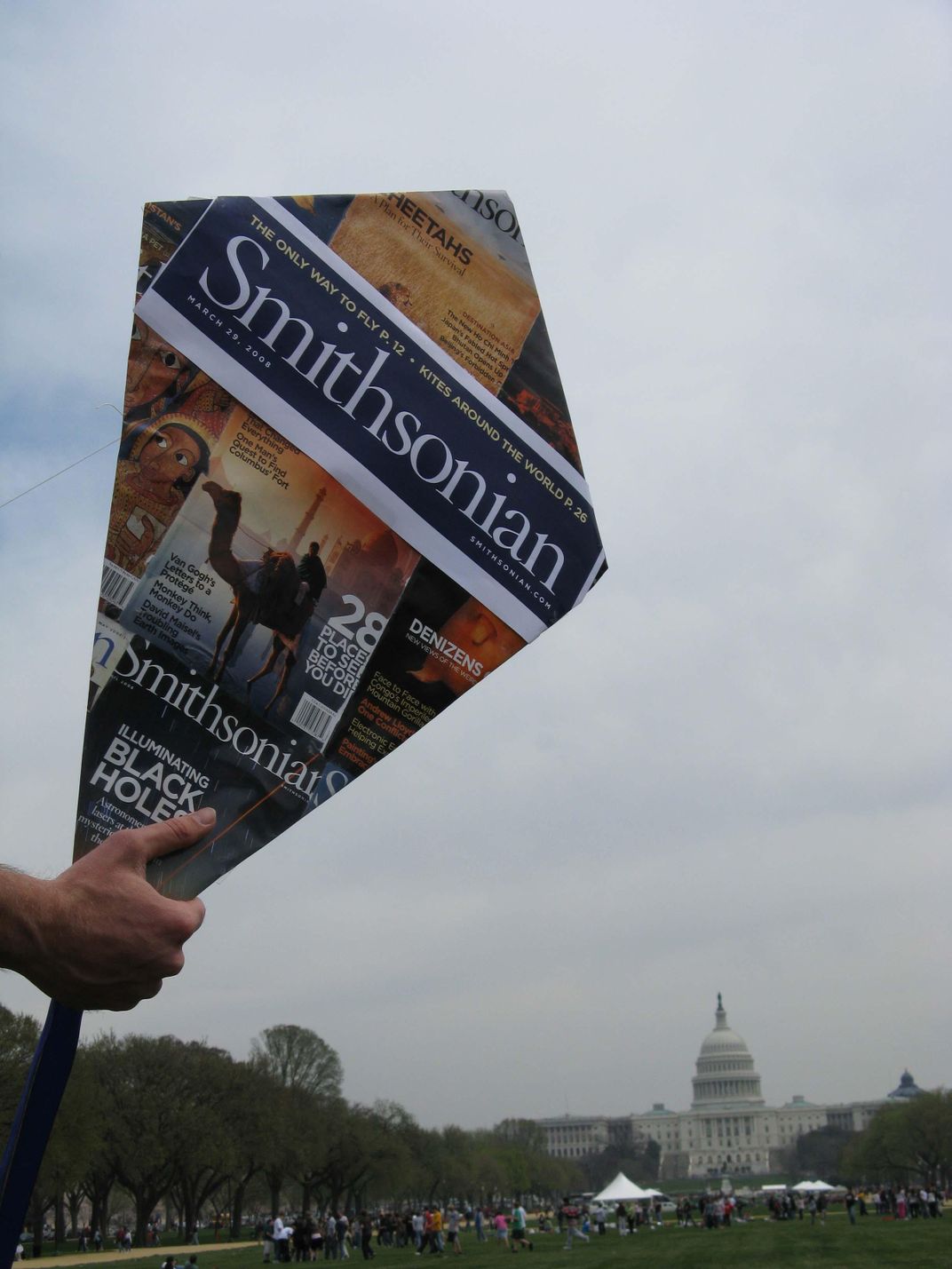
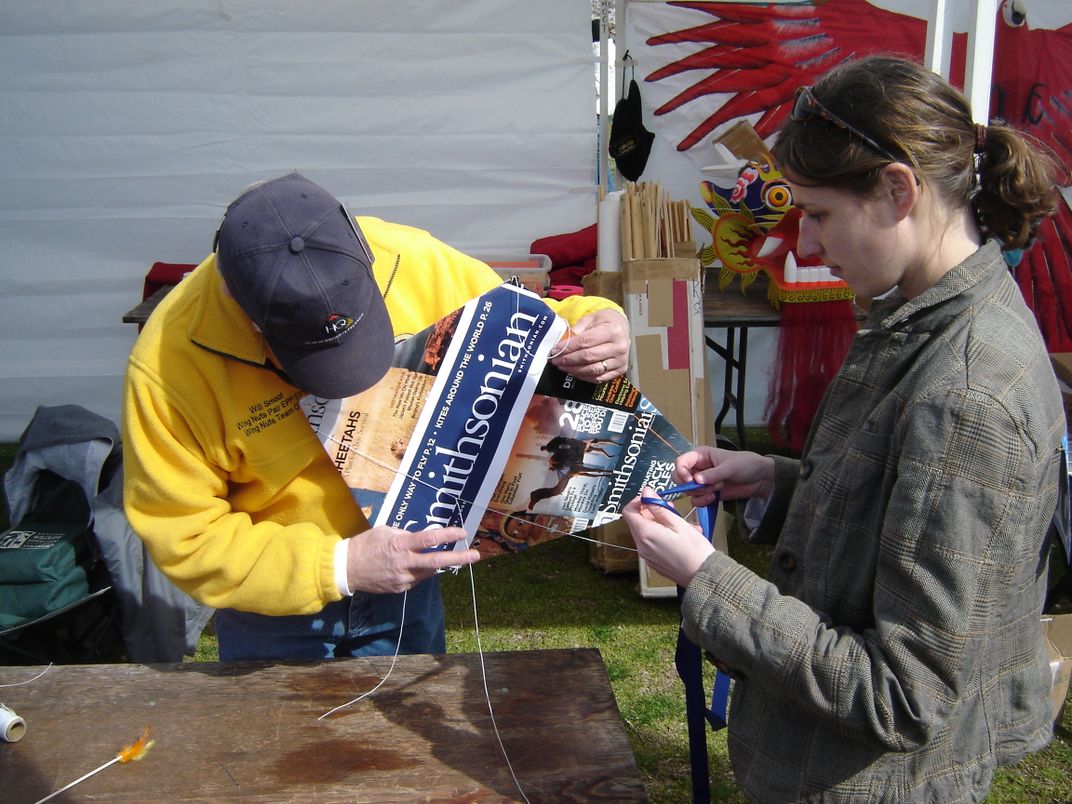
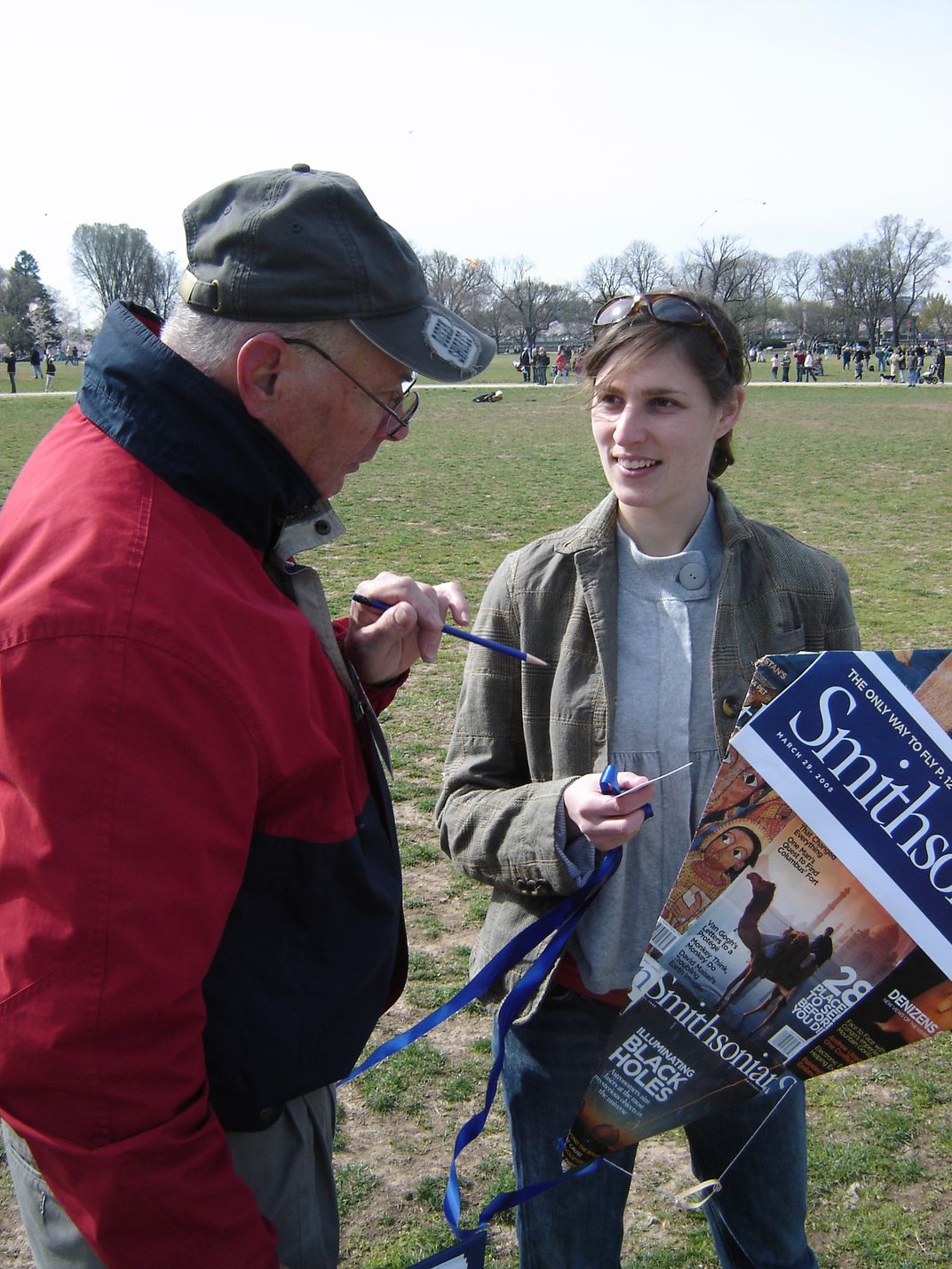
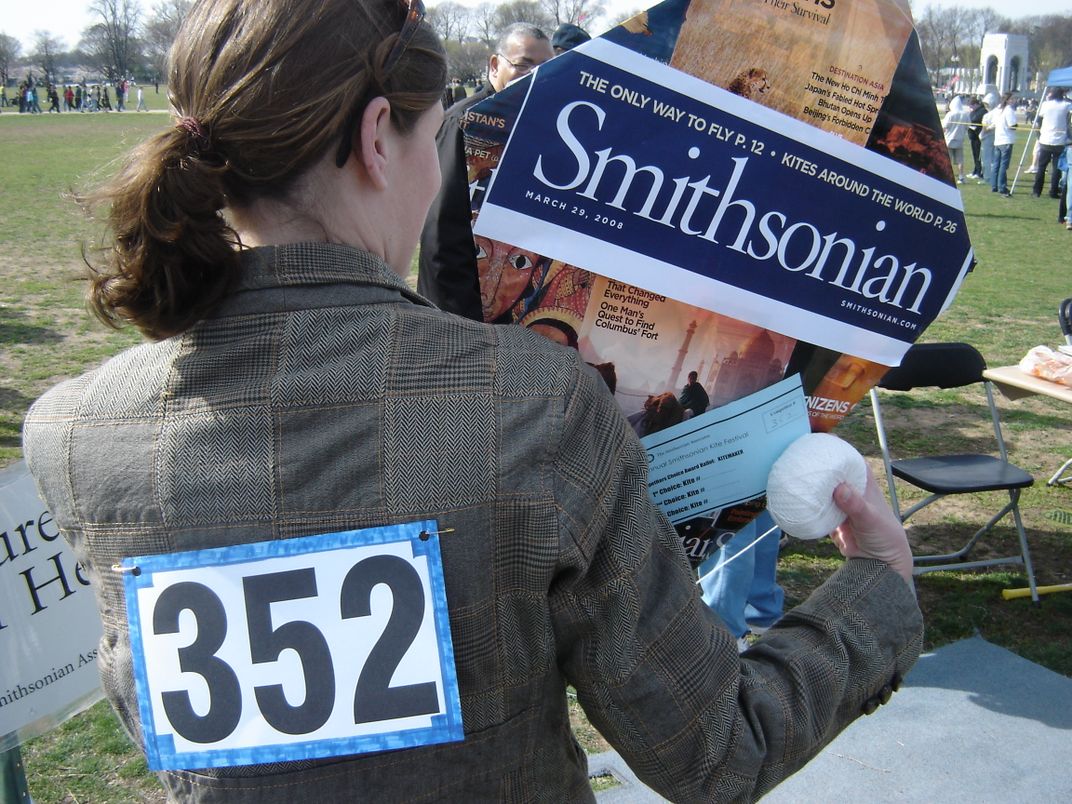
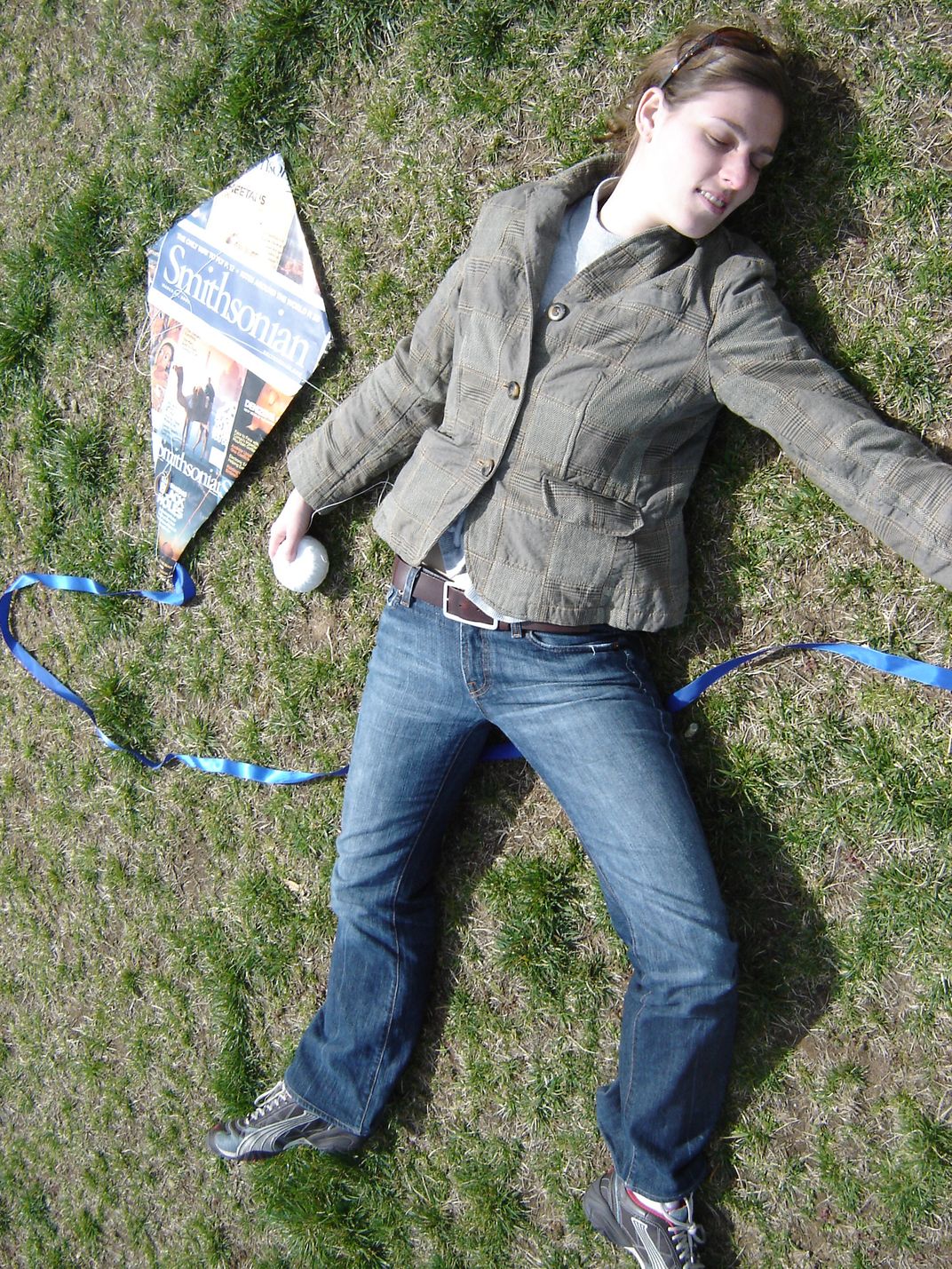
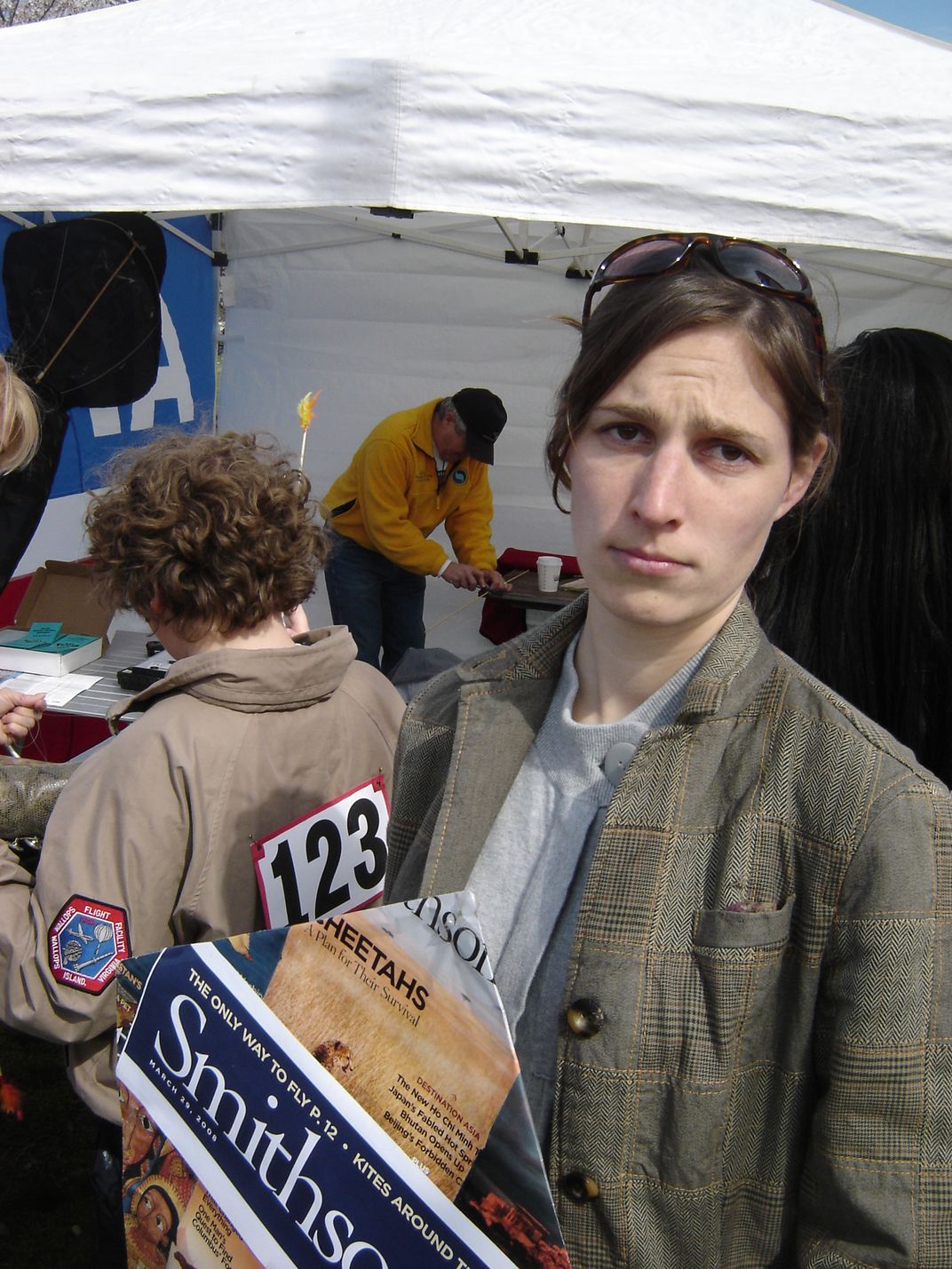
/https://tf-cmsv2-smithsonianmag-media.s3.amazonaws.com/accounts/headshot/megan.png)